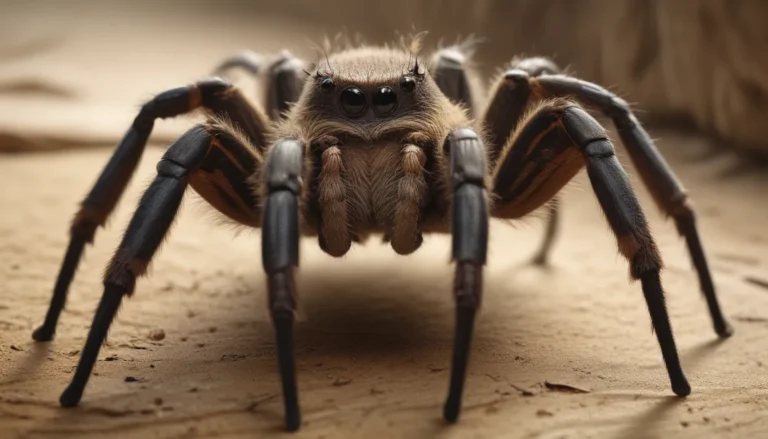The pictures we use in our articles might not show exactly what the words say. We choose these pictures to make you interested in reading more. The pictures work together with the words but don’t take their place. The words still tell you the important facts.
The Fer-de-lance, scientifically known as Bothrops asper, is a captivating and enigmatic snake species that thrives in the tropical regions of Central and South America. Despite its ominous name, which means "spearhead" in French, this venomous pit viper is renowned for its triangular head and deadly venom.
Join us on a journey to unravel some of the most intriguing facts about the Fer-de-lance. From its physical features to its hunting techniques and ecological significance, we will delve into the realm of this secretive and powerful snake. Whether you are a snake enthusiast or simply curious about the fascinating creatures that share our planet, prepare to be mesmerized by the enigmatic nature of the Fer-de-lance.
Unraveling the Enigma of the Fer-de-lance
- The Fer-de-lance is a highly venomous snake with potent hemotoxic venom, exceptional camouflage, and aggressive hunting behavior, making it a captivating yet dangerous predator in Central and South America.
- Understanding and conserving the Fer-de-lance is crucial for maintaining the delicate balance of ecosystems in Central and South America, as this enigmatic snake plays a vital role as a top predator in the region's diverse tapestry of life.
Delving into the World of the Fer-de-lance
The Venomous Predator
The Fer-de-lance, known scientifically as Bothrops asper, is a highly venomous snake native to Central and South America. Its deadly reputation is well-deserved, owing to its powerful hemotoxic venom and cryptic nature. The name "spearhead" perfectly encapsulates the sharp and lethal fangs of this formidable predator.
Potent Venom and Deadly Consequences
One of the defining features of the Fer-de-lance is its potent venom, which contains a complex mixture of toxins capable of inflicting severe tissue damage, organ failure, and even death. Predominantly hemotoxic, the snake's venom wreaks havoc on the blood and tissues of its prey, causing excruciating pain and requiring urgent medical intervention.
Master of Camouflage
The Fer-de-lance boasts exceptional camouflage, blending seamlessly with the forest floor through its earthy tones of brown, gray, and olive green. This effective disguise enables the snake to conceal itself, transforming into a stealthy predator that can surprise unsuspecting prey with lightning-fast strikes.
Nocturnal Hunter
Under the cover of darkness, the Fer-de-lance emerges as a nocturnal predator, capitalizing on the cooler night hours to hunt efficiently. Its nocturnal habits offer a strategic advantage, enabling it to evade the scorching daytime temperatures and enhance its chances of successful hunting expeditions.
The Art of Ambush
An ambush predator by nature, the Fer-de-lance employs patience and precision in waiting for unsuspecting prey to come within striking range. Its stealth and swift strikes catch small mammals, birds, and even other snakes off guard, ensuring a high success rate in capturing its meals while conserving energy.
The Fascination of Viviparity
Unlike its egg-laying counterparts, the Fer-de-lance adopts a viviparous reproductive strategy, giving birth to live offspring. After several months of gestation, a female Fer-de-lance can deliver a litter of up to 80 snakelets, each measuring approximately 12-14 inches in length. This unique reproductive trait contributes to the snake's survival and population dynamics.
Endemic Elegance
Hailing from Central and South America, the Fer-de-lance inhabits a diverse array of habitats, including rainforests, grasslands, and cultivated areas. From Mexico to Brazil, this enigmatic snake thrives across various countries in the region, carving out its niche in the intricate ecosystem.
The Aggressive Guardian
Renowned for its aggressive demeanor, the Fer-de-lance swiftly defends itself when provoked, delivering venomous bites with minimal warning. Human encounters with this snake demand caution and a respectful distance to avert potentially hazardous situations.
Guardian of the Ecosystem
Despite its fearsome reputation, the Fer-de-lance assumes a crucial role in its ecosystem as a top predator, regulating populations of small mammals and upholding the delicate balance of the food chain. Safeguarding and understanding the Fer-de-lance are paramount for preserving the biodiversity of the region.
Fangs of Power
The Fer-de-lance boasts elongated hollow fangs at the front of its mouth, retractable when not in use. During strikes, these fangs swiftly extend, delivering venomous bites that incapacitate its prey, showcasing the snake's formidable hunting arsenal.
Adept in Aquatic Realms
Mastery extends beyond land for the Fer-de-lance, which excels as a proficient swimmer, effortlessly navigating rivers, streams, and various water bodies. This aquatic agility broadens its hunting territory, granting access to prey-rich environments beyond the reach of many predators.
A Testimony to Endurance
With a relatively lengthy lifespan compared to other reptiles, the Fer-de-lance can thrive in the wild for up to 15 years, and even surpass the age of 25 in captivity. Its enduring longevity underscores its prowess as a top predator in its habitat, maintaining a significant presence over time.
Triangular Might
The Fer-de-lance distinguishes itself through its iconic triangular head, a hallmark feature among venomous snakes. This distinct shape, indicative of its ample venom glands, serves as a visual warning to potential adversaries and humans, urging them to maintain a safe distance from this formidable creature.
Embodying Danger
Regarded as one of the most hazardous snakes in the Americas, the Fer-de-lance's aggressive nature, potent venom, and widespread distribution underscore its perilous reputation. Encounters with this species necessitate vigilance, with bites warranting immediate medical attention as a critical emergency.
The Essence of a Name
Derived from the French phrase for "spearhead," the Fer-de-lance's name perfectly encapsulates its head shape and predatory prowess. This moniker adds allure and intrigue to the enigmatic persona of this snake, enhancing its mystique in the realm of nature.
A Confluence of Fear and Fascination
Throughout history, the Fer-de-lance has mesmerized humanity, eliciting a blend of fear and fascination. Its lethal nature and cryptic behavior have woven a tapestry of myths, legends, and scientific inquiries. Delving into the enigmatic realm of this snake contributes to our comprehension of the natural world and instills reverence for its vital role in the ecosystem.
Guardians of the Enigma
Bearing the mantle of a protected species, the Fer-de-lance is safeguarded by legal measures in many countries where it resides. Conservation initiatives aim to preserve its habitat and educate the public about coexisting with these enigmatic creatures harmoniously.
Embracing the Enigmatic Essence
The Fer-de-lance stands as an emblem of fascination and mystery, captivating snake enthusiasts globally. From its distinct features to its venomous allure, this snake beckons us to explore its enigmatic realm. With its stealthy demeanor and potent bite, it claims a well-deserved place among the most perilous snakes of the Americas.
Gaining insight into the unique traits and behaviors of the Fer-de-lance holds significance for researchers and the general populace alike. By shedding light on these 18 enigmatic facts, we aim to provide invaluable glimpses into the realm of this extraordinary species.
As we venture further into the wonders of the animal kingdom, let us approach these creatures with reverence and mindfulness. Through knowledge and understanding, we can coexist respectfully and cherish the intricate beauty of the diverse wildlife that graces our world.
Discover More Enigmatic Creatures
Unravel the mysteries of another venomous serpent, the Terciopelo, and delve deeper into the enigmatic world of these captivating creatures.
FAQs
Q: Are Fer-de-lance snakes dangerous?
A: Yes, Fer-de-lance snakes are highly venomous, and their bites can be fatal if not promptly treated.
Q: Where are Fer-de-lance snakes found?
A: Fer-de-lance snakes are endemic to the rainforests and tropical regions of Central and South America.
Q: What do Fer-de-lance snakes eat?
A: Fer-de-lance snakes primarily prey on small mammals, birds, and reptiles.
Q: How big do Fer-de-lance snakes grow?
A: Fer-de-lance snakes can reach lengths of up to 7 feet (2 meters).
Q: Can Fer-de-lance snakes be kept as pets?
A: Due to their highly venomous nature and aggressive tendencies, Fer-de-lance snakes are not recommended as pets.
Q: What should I do if I encounter a Fer-de-lance snake?
A: It is crucial to maintain a safe distance, refrain from provoking the snake, and seek professional assistance for relocation or removal.
Conclusion
The Fer-de-lance epitomizes an intriguing blend of fear and fascination, drawing enthusiasts into its enigmatic world. From its striking appearance to its potent venom, this snake embodies the allure of the unknown. With its stealthy prowess and formidable presence, it rightfully claims its position as one of the Americas' most perilous snakes.
Understanding the nuances of the Fer-de-lance's characteristics and behaviors holds immense value for both researchers and the wider audience. Through the revelation of these 18 enigmatic facts, we aspire to offer profound insights into the realm of this remarkable species.
As we embark on an exploration of the natural world's treasures, let us approach these creatures with respect and awe. By embracing knowledge and insight, we can forge a harmonious coexistence with the diverse and enchanting wildlife that inhabits our planet.






